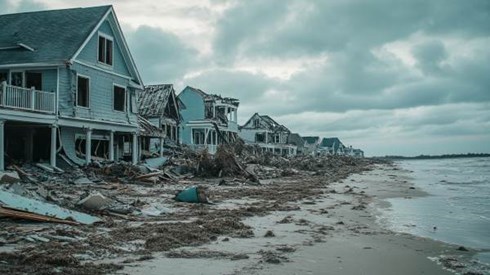Wildfires and Storms in US Lead Global Disaster Losses in Early 2025

July 30, 2025

Natural catastrophes worldwide caused approximately $131 billion in economic losses in the first half of 2025, with insurers covering nearly $80 billion, according to Munich Re's H1 2025 Natural Disaster Update. The report stated that these insured losses were the second highest for any first half-year since 1980, driven overwhelmingly by weather-related events.
The costliest event was a series of wildfires near Los Angeles in January, which led to $53 billion in total losses, $40 billion of which were insured. Per Munich Re, these fires represented the most expensive wildfire event on record and occurred in what is typically the region's rainy season. The fires resulted in 29 fatalities.
Drought conditions, leftover vegetation from previous wet years, and powerful Santa Ana winds created ideal wildfire conditions. Once the fires ignited on January 7, wind-driven embers accelerated their spread. According to the update, climate change has increased the frequency of such dangerous combinations.
"Strong Santa Ana winds are common in California during winter. At the same time, the wildfire season there tends to last longer than in the past because there is often less precipitation in the cooler months. This means that two accelerants, drought and strong winds, coincide more frequently. Then all it takes is just one spark in the wrong place for disaster to strike," said chief climate scientist Tobias Grimm in the report.
The United States accounted for the largest share of natural disaster losses globally, primarily due to wildfires and multiple severe convective storms. Munich Re said four major storm systems between March and May—including tornado outbreaks—resulted in $34 billion in total losses, $26 billion of which were insured.
In Asia, a 7.7-magnitude earthquake struck Myanmar on March 28, killing an estimated 4,500 people. The quake caused $12 billion in losses, making it the second-costliest disaster in the first half of 2025, though only a small portion was insured. According to the update, the epicenter was located near the cities of Sagaing and Mandalay.
Cyclone Alfred in Australia caused $3.5 billion in losses, including $1.4 billion in insured damages, after it brought severe flooding to Queensland and New South Wales. The report noted that Alfred tracked farther south than is typical for cyclones, raising concerns about future storm threats in the region due to climate change.
Taiwan's semiconductor industry also suffered damage after a magnitude-6 earthquake hit Tainan in January. According to Munich Re, losses totaled $1.3 billion, of which $0.6 billion were insured, largely due to business interruption impacts in the high-tech manufacturing sector.
In Europe, total losses were around $5 billion, down from the previous year, with about half insured. Munich Re said the costliest event was a series of hailstorms in France, Austria, and Germany in June, resulting in $1.2 billion in damage. Switzerland also saw a major landslide in May in the Loetschental valley, causing $0.5 billion in losses, $0.4 billion of which were insured.
The Asia-Pacific and Africa regions experienced combined losses of $29 billion in the first half of 2025, with only $5 billion insured. Per the update, two cyclones in the southwest Indian Ocean caused $1.5 billion in damage, primarily to Réunion, Mozambique, and Madagascar. Coverage was minimal outside of Réunion.
Based on National Oceanic and Atmospheric Administration data cited in the update, average global temperatures in the first half of 2025 were 1.4°C above pre-industrial levels, making it the second-warmest start to a year on record. Research cited by Munich Re indicates a growing consensus that climate change is contributing to the severity and frequency of weather-related disasters.
July 30, 2025
